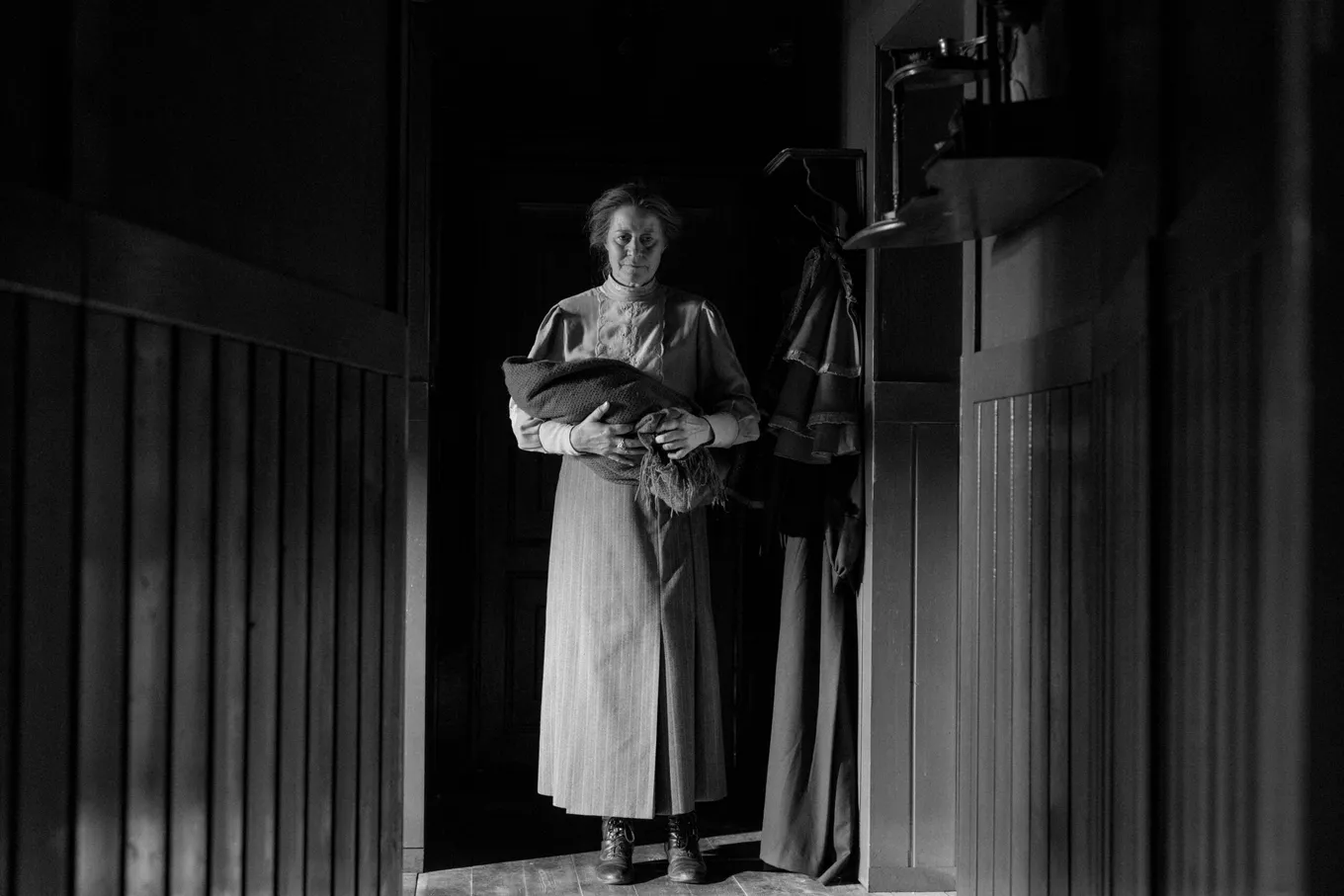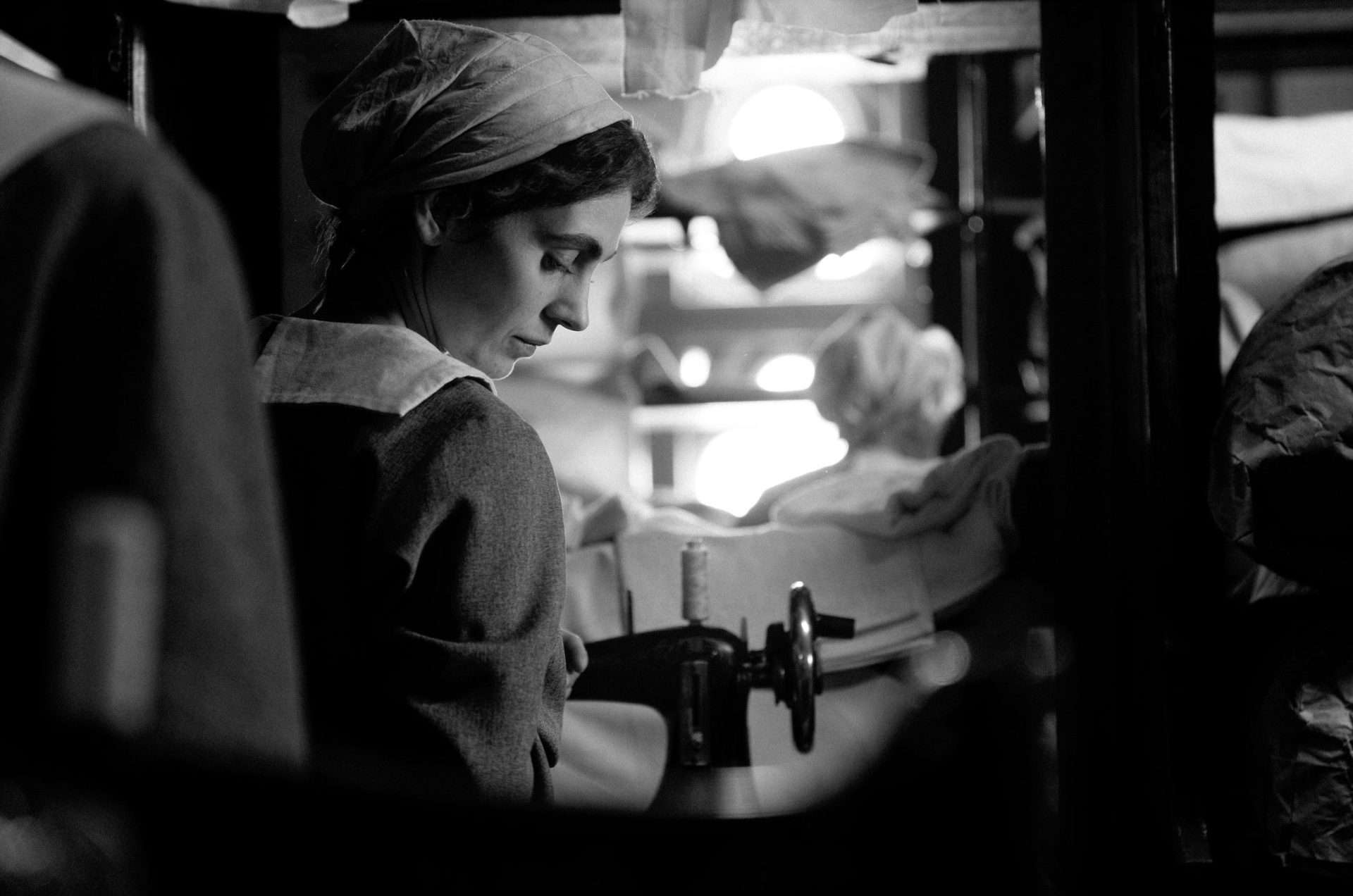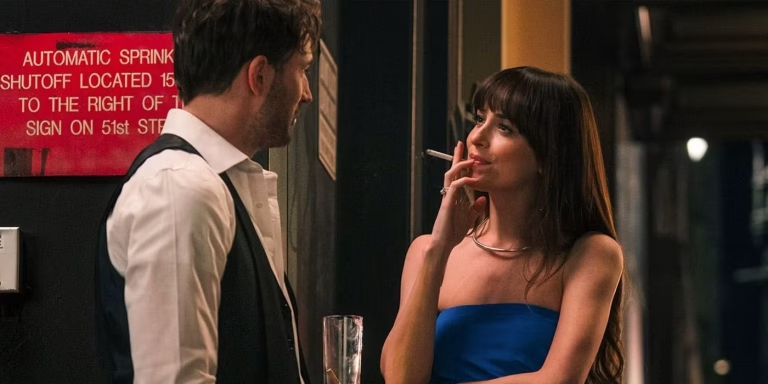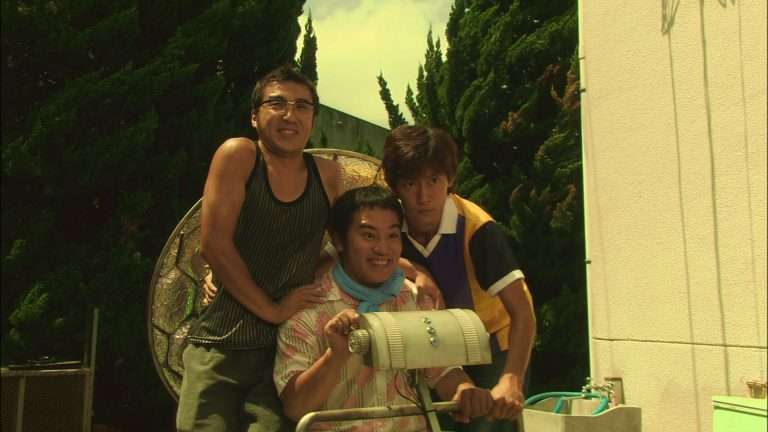“The Girl with the Needle” opens with a haunting tableau of women from various walks of life, their stories intertwining through a common undercurrent of desolation and self-destruction. A chilling atmosphere permeates, shattering the screen with a silent impact. Who knew the introduction was an early sign of the intense darkness the film contains, hidden deeper in its vault? Karoline faces major financial problems and can’t afford to pay her rent. The post-World War I period has subjected the nation to misery, whereby joy and happiness seem to be absent from every walk of life.
She eventually leaves the house and moves into a disorderly, wrecked mansion, where she lives in an overcharged room with no proper facilities (a bucket serves as a “toilet”). She then falls in love (mutually) with the young owner of the company she works for and gets dumped by his family upon announcing her pregnancy. Karoline stumbles upon Dagmar, a candy shop owner who runs a secret adoption agency to help mothers in need. She decides to work as a wet nurse for her, and dark secrets begin to unravel.
Following the psychological intensity of “The Here After” (2015) and the societal pressures explored in “Sweat” (2020), director Magnus von Horn maintains his signature style by infusing a palpable sense of dread into his latest work. Here, he provides an overview of the citizens’ suffering, with everyone experiencing a peak of rage and fatigue. Despite the timeline being mainly shown post-World War I, nothing much has changed within the community—in fact, it has worsened the situation. The ruins’ silence murmurs bereavement and absence, setting the film’s tone to an uncanny and melancholic atmosphere that seems more like an exclamation for help. Michal Dymek’s black-and-white cinematography immerses the audience in the film’s pervasive gloom, meticulously rendering the village’s every corner with stark realism.

“The Girl with the Needle” consistently observes the adverse impact of pride and authority, aided by men’s dominance. Paradoxically, while immense, the human cost of war is sometimes eclipsed by the devastating consequences of interpersonal betrayal. Men often give false hope to women in matters of affection and profession, a fact that Karoline’s depression-filled glare makes strikingly evident. Magnus shows the process of dealing with deception within the socio-political system, which is a perilous situation that never improves for Karoline and other women in the society.
Karoline’s character encapsulates the full spectrum of female suffering, from romantic despair to maternal anguish, as meticulously crafted by writers Line Langebek and Magnus von Horn. The film presents a comprehensive and unflinching portrayal of the mental health crisis through its visual style, plot structure, and emotional impact. The guilt and the coping mechanism of loss gradually take control, much like cancerous cells in an infected body, multiplying and becoming more potent over time.
Magnus aims to imprint a haunting image of desolation on the viewer, leaving a lasting sense of bitterness. Actress Vic Carmen Sonne’s soulful performance will definitely be remembered, as she brings Karoline’s character to life through an authentic and devoted portrayal. Both Trine Dyrholm as Dagmar and Vic Carmen embody a cryptic menace that erupts into terrifying violence without warning. Frederikke Hoffmeier deserves praise for introducing an ominous musical score that aims to heighten viewers’ trembling and instill a persistent sense of fear in the audience.

Throughout the film’s gritty atmosphere, a number of questions and thoughts linger. What factors contribute to the empathy deficit often observed in individuals experiencing mental distress? Does pride hold a higher value than humanity? Is there a measurable standard by which a mother’s love can be judged? Why is it so difficult to put trust in someone? “The Girl with the Needle,” which premiered at this year’s Cannes Film Festival, subtly conveys horror against the backdrop of a dreadful war. The needle becomes a potent symbol of self-inflicted torment, a sharp reminder of the despair driving those seeking solace.
However, the lack of humanity leads to further turmoil and betrayal within the community. The film paints a harrowing picture of existence, where profound suffering marks both beginnings and endings. The film functions as a powerful indictment of the violence perpetrated against women while simultaneously offering a poignant portrait of their longing for tenderness and freedom.



![Hana-Bi [1997] Review – The Meditative Trip of a Beleaguered Detective](https://79468c92.delivery.rocketcdn.me/wp-content/uploads/2019/09/Hana-Bi-1997-768x432.jpg)


